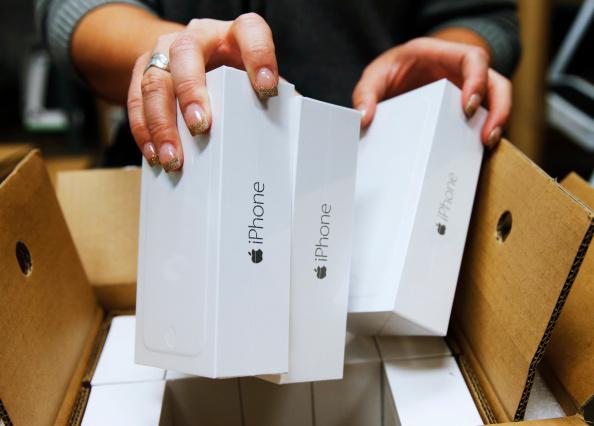iPhones are less reliable than Android devices, study finds
Overheating is cited as the most common problem faced by iPhone users

Your support helps us to tell the story
From reproductive rights to climate change to Big Tech, The Independent is on the ground when the story is developing. Whether it's investigating the financials of Elon Musk's pro-Trump PAC or producing our latest documentary, 'The A Word', which shines a light on the American women fighting for reproductive rights, we know how important it is to parse out the facts from the messaging.
At such a critical moment in US history, we need reporters on the ground. Your donation allows us to keep sending journalists to speak to both sides of the story.
The Independent is trusted by Americans across the entire political spectrum. And unlike many other quality news outlets, we choose not to lock Americans out of our reporting and analysis with paywalls. We believe quality journalism should be available to everyone, paid for by those who can afford it.
Your support makes all the difference.Apple’s iPhones and iPads are losing the battle against Android devices.
That is according to a new study by mobile diagnostics firms Blancco Technology Group (BTG), which claims that Apple’s devices are less reliable and experienced a bigger failure rate than their Android counterpart, driven by bugs in the iOS 10 update.
For the purposes of the report the word “failure” refers to any number of problems including instances of apps crashing, connection difficulties and overheating.
About 62 per cent of iOS devices suffered performance failures in the third quarter of 2016 compared with 47 per cent of Android devices, the report found.
The iPhone 6 was the main culprit with the highest failure rate of 13 per cent. This was followed by the iPhone 5S and iPhone 6S both on 9 per cent.
Overheating is cited as the most common problem faced by iPhone users, followed by crashing apps at 15 per cent and headphone problems at 11 per cent.
“If an iOS device exceeds a certain internal temperature threshold, it could have a ripple effect on other aspects of the device’s performance,” BTG said in its report.
“For example, overheating could lead to the device no longer charging. It could also cause the display screen to dim or go black altogether. Other residual effects could be a weakened carrier signal or the camera flash being disabled temporarily,” the company added.
The top crashing iOS apps chart puts Instagram in the leading position, crashing 14 per cent of the time followed by Snapchat at 12 per cent. Pokemon Go was dubbed “one of the most unstable iOS apps” in the third quarter, with apps crashing 5 per cent of the time.

While the news could prove sobering to Apple and its iOS users, the company was not alone in experiencing some issues.
On the Android side, Samsung had the highest rate of device failure at 11 per cent.
Android users suffered from USB problems and battery drain, which BTG blamed on the popular Pokemon Go app.
Richard Stiennon, chief strategy officer at Blancco Technology Group, said: “Battery charging ranked in the list of the top five performance issues plaguing Android devices in the third quarter.
“Since users must keep their device screen and GPS on in order to play the virtual reality game, both of these functions are known to drain the device’s battery charge.”
Join our commenting forum
Join thought-provoking conversations, follow other Independent readers and see their replies
Comments